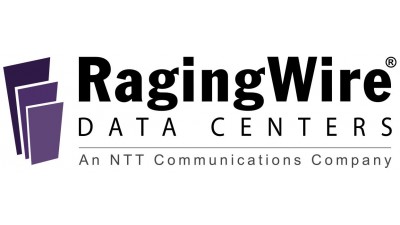Thriving Tech Scene Fuels Data Center Development In Silicon Valley

Extending from the southern end of San Francisco for roughly 40 miles down Highway 101 is a cluster of cities known as Silicon Valley — the unofficial tech capital of the world. The "Silicon Valley" nickname originally appeared in the early 1970s in reference to the number of silicon chip creators and manufacturers that got their start there. Today, the region is home to the global HQ of technology titans like Apple, Google and Facebook, and accounts for fully a third of venture capital investment in the U.S.
While other cities in Silicon Valley, such as San Jose, Palo Alto and Menlo Park, are known for various technology milestones, Santa Clara is the premier spot for data centers in Silicon Valley. Driven by Santa Clara, Silicon Valley is the second-largest market for commissioned data center space in the U.S., behind only Northern Virginia. Data center space is a rare commodity in Silicon Valley, with a vacancy rate at less than 8% among the more than 30 data centers operating within a concentrated area of 3.5 square miles.
Silicon Valley’s data center footprint is growing. Global data center operator RagingWire recently disclosed that it will make its debut in the Silicon Valley market, leasing space to customers at its new Silicon Valley SV1 Data Center in Santa Clara. The 160K SF, four-story facility is being constructed on a 3.3-acre site, and will offer 64K SF of customizable data floor space and 16 megawatts of scalable critical IT load. First occupancy is expected in mid-2020.
SV1 will be fed by Silicon Valley Power, a provider that boasts rates 25% to 40% lower than other Bay Area power companies, is rated in the top 5% in the U.S. for reliability, and has been nationally honored for its renewable energy programs.
With a fully fenced campus, multifactor authentication and a 24/7/365 staff of highly trained security officers, RagingWire’s Silicon Valley data center will offer customers top-notch security to go along with reliable and efficient power, cooling, telecommunications and cloud connectivity.
The Silicon Valley market has become a hot location for hyperscale customers, especially large enterprises that want to customize their data center space to meet particular needs. These companies, and companies across Europe and Asia, can also benefit from RagingWire’s global reach. As a part of NTT, a $118B, 283,000-employee company, RagingWire connects its customers to one of the largest data center platforms in the world, with 140 data centers in 20 countries.
In the U.S. alone, RagingWire has nearly 200 megawatts of critical IT load spread across more than 2M SF of data center space. In addition to Silicon Valley, the operator has established a data center presence in Ashburn, Virginia, Dallas and Sacramento, California, with plans to expand into additional markets across North America.
RagingWire has indicated that recent large customer wins have validated the company’s strategic shift to target hyperscale customers.
“We are seeing increasing demand from large customers who want a lot of data center capacity as quickly as possible,” RagingWire Chief Revenue Officer Joe Goldsmith said. “That’s why in addition to pre-leasing space at our new 16 MW data center in Silicon Valley, we are also pre-leasing two new 32 MW data centers on our 78-acre campus in Ashburn, Virginia, as well as offering customizable data centers we can build to suit on land we own in Chicago and Dallas.”

Building a successful data center in California requires a heightened focus on the structural safety of the building. The Bay Area has a 72% probability of one or more earthquakes greater than a 6.7 magnitude taking place within the next 25 years, with several minor quakes occurring daily.
RagingWire had this challenge in mind when it began planning for its Silicon Valley location. The company has a track record of building data center structures that are customized for specific environments. For example, Dallas is known for extreme wind storms, so RagingWire’s Dallas TX1 Data Center was built to withstand a tornado with 136 mph winds.
RagingWire’s parent company, NTT, had a similar approach when it built its data centers in Tokyo. In 2011, a magnitude 9.1 earthquake and tsunami shook northeastern Japan. While this catastrophe damaged more than 1 million buildings and caused approximately $235B of damage, NTT’s data centers in Tokyo withstood the devastation with no harm done.
NTT’s Tokyo facilities were constructed using advanced technology with base isolation that reduces seismic impact by up to 80%, protectively cushioning all the data vaults and the IT devices within them.
RagingWire’s SV1 Data Center in Silicon Valley will feature the same type of vibration-absorbing technology to prevent damage to the facility in the case of a seismic event. It will also include seismic bracing on all floors to ensure mission-critical computers and other technology remain unharmed.
Silicon Valley has the highest concentration of high-tech workers of any metropolitan area, with 285.9 out of every 1,000 private sector workers. And that isn't expected to change anytime soon.
For many companies, moving data center operations to Silicon Valley is a strategic decision.
“I think that this is where the players are,” Silicon Valley Power Program Manager Debby Barry said in a CapRE report. “I grew up in this area, and there are certain downturns in the market, where the news will say that industry is leaving California. But they never do.”
This feature was produced in collaboration between Bisnow Branded Content and RagingWire. Bisnow news staff was not involved in the production of this content.

